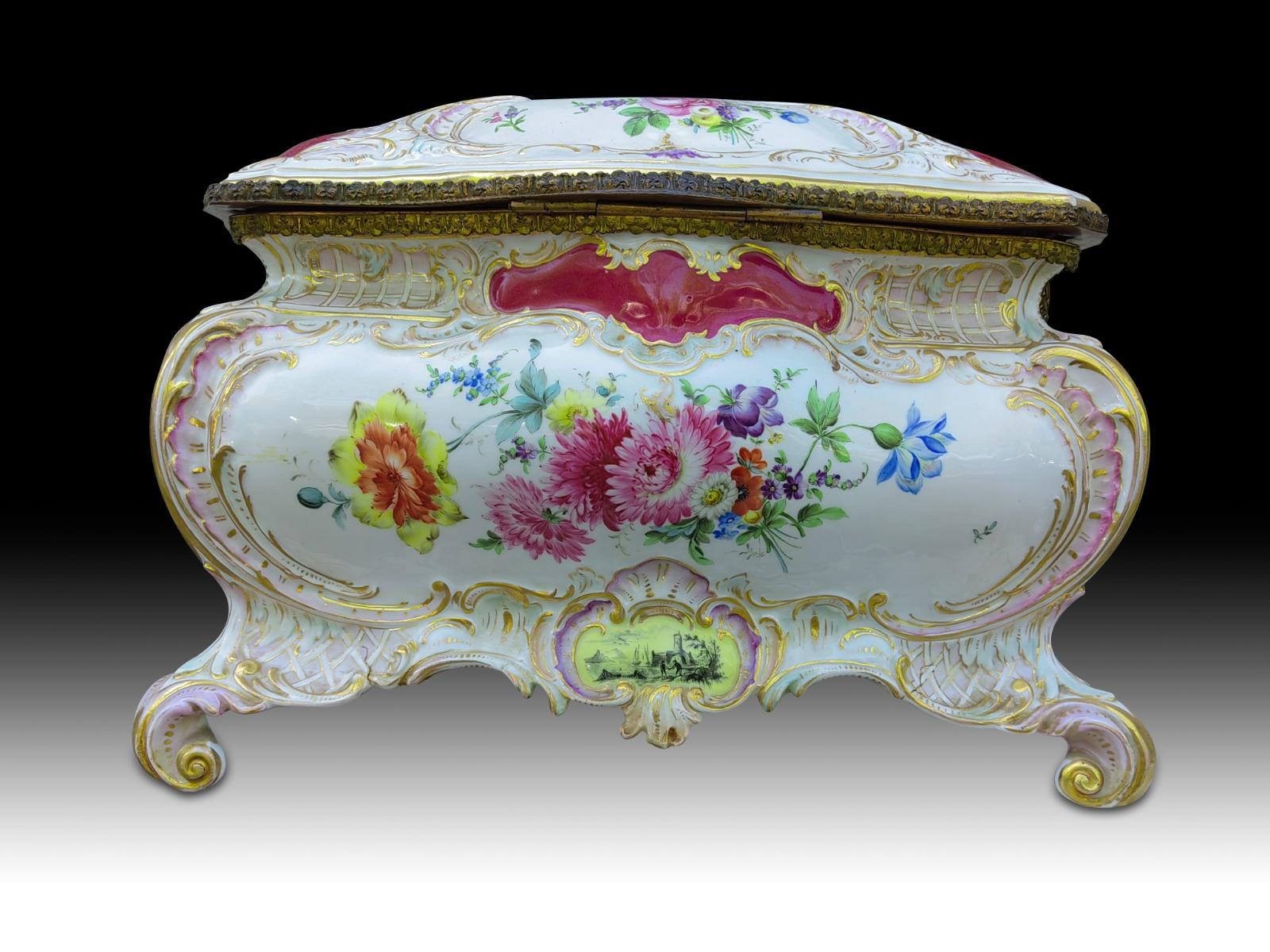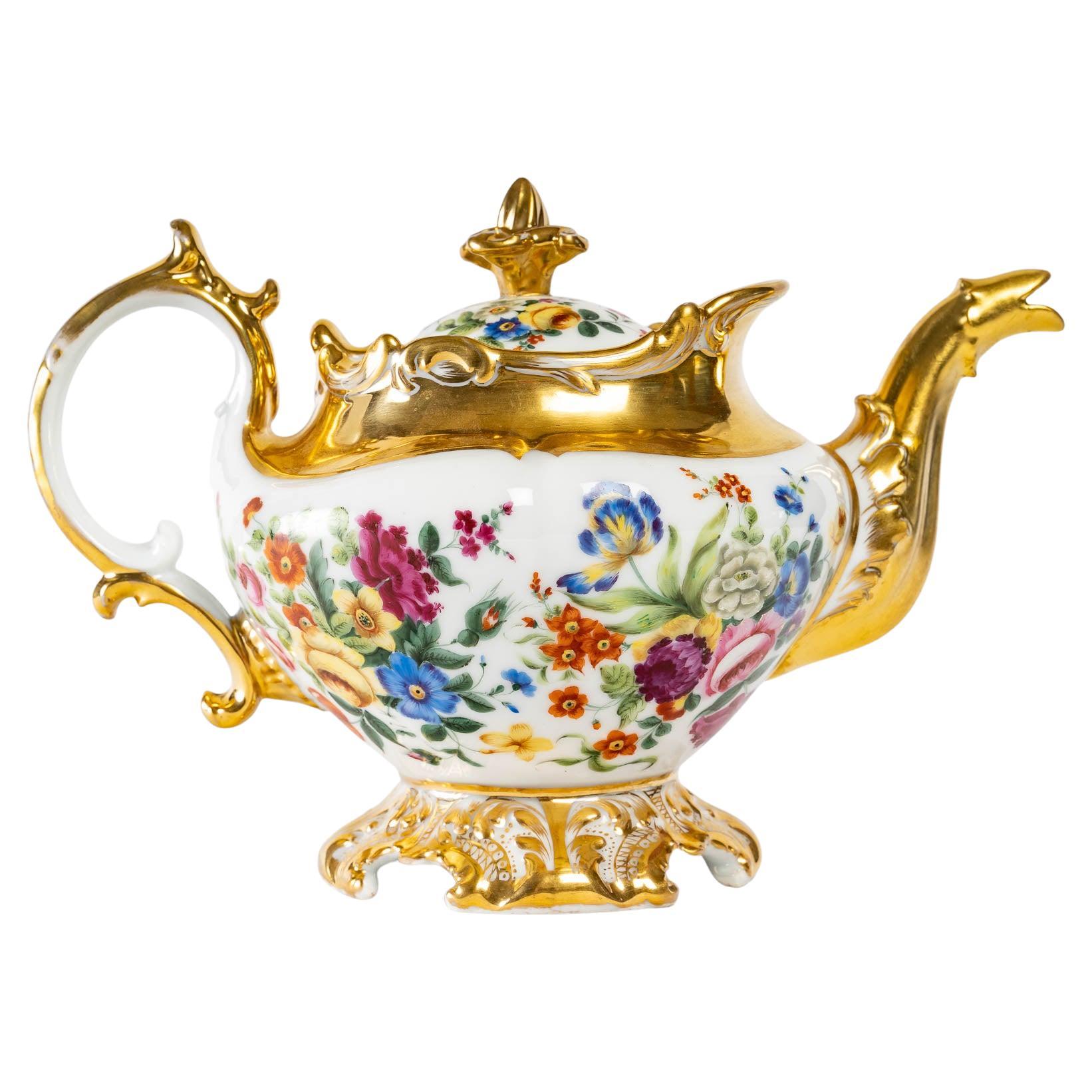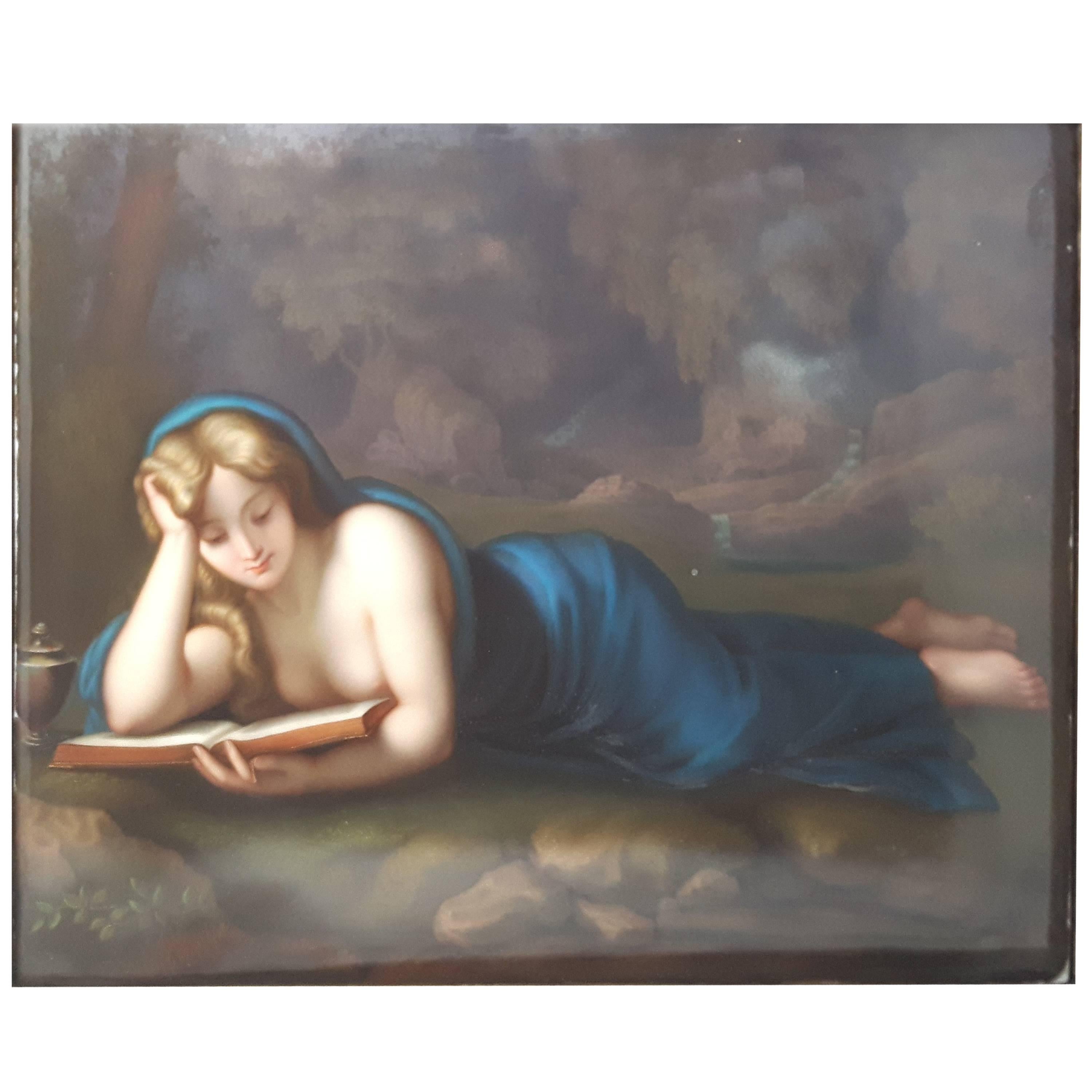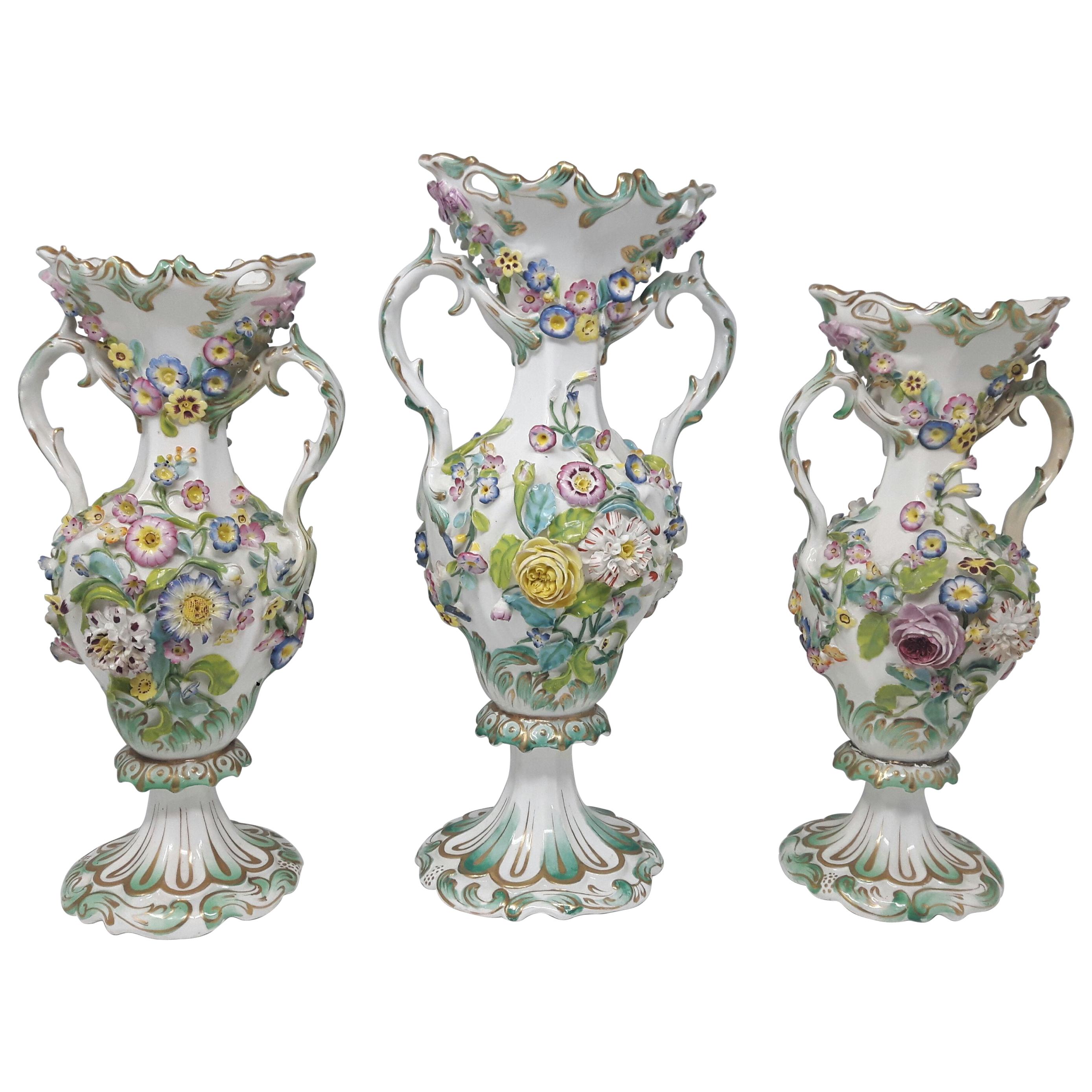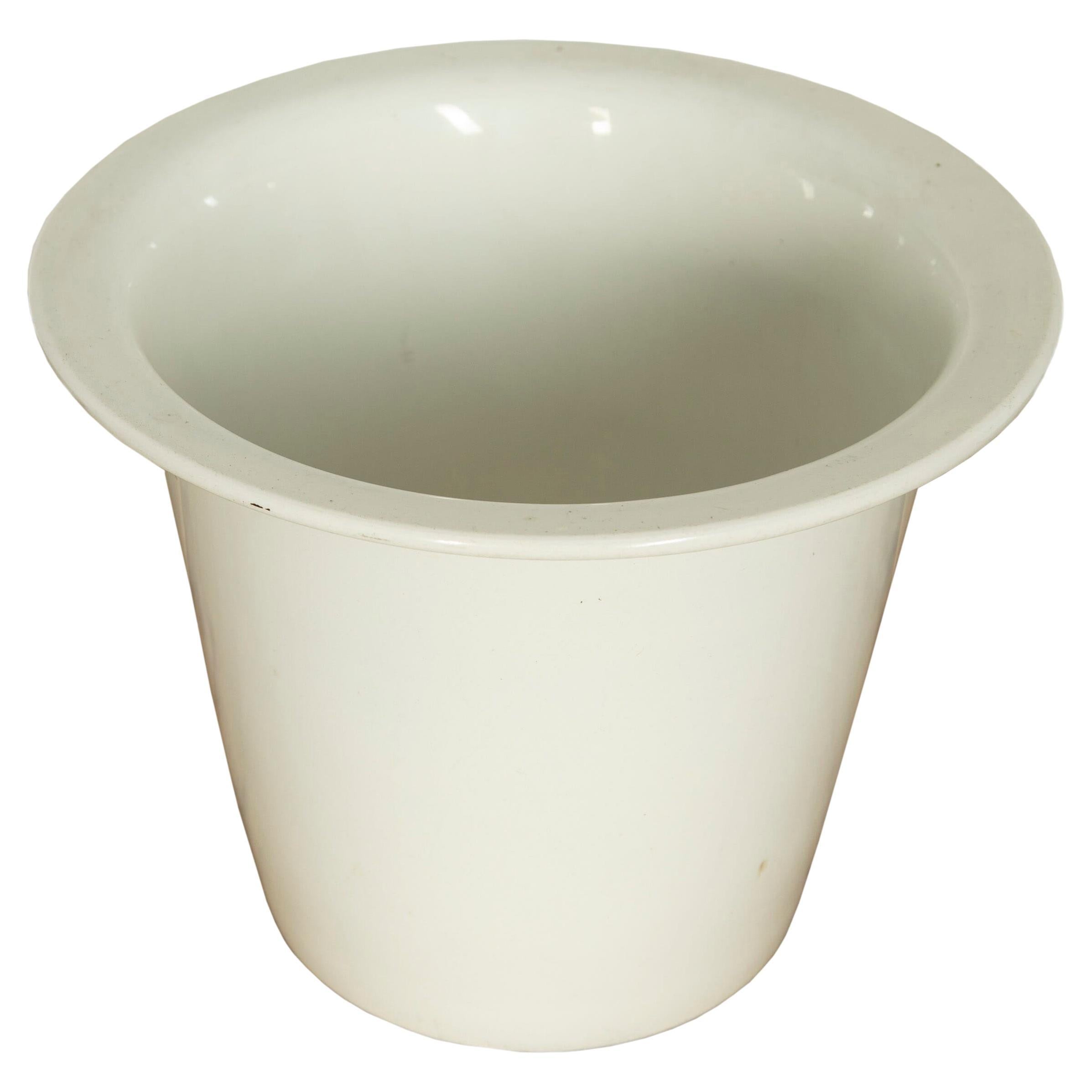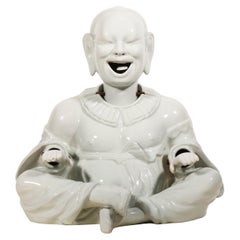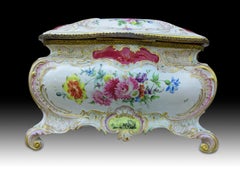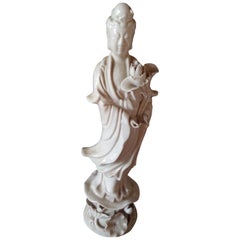
19th Century Porcelain, Blanche de Chine Buddha
View Similar Items
1 of 5
19th Century Porcelain, Blanche de Chine Buddha
About the Item
- Dimensions:Height: 4.73 in (12 cm)Diameter: 2.37 in (6 cm)
- Style:Chinoiserie (In the Style Of)
- Materials and Techniques:
- Place of Origin:
- Period:
- Date of Manufacture:1880
- Condition:
- Seller Location:Lentate sul Seveso (Mb), IT
- Reference Number:1stDibs: LU4277214150301
You May Also Like
- Magot, original 19th century porcelain BuddhaLocated in Vicenza, ITMagot of exceptional size with tilting head, tongue and hands. Material made entirely of porcelain, with the exception of the "biscuit" hands. What are magots? The word magot comes from the French: barbary ape. They are male or female figures with oriental features. Usually the material used for the representation was painted or decorated porcelain. The subject depicted, in a good-natured and pleasant way, is Pu-Tai. The Chinese god of happiness and abundance. It is said that they brought good luck because, thanks to their head, tongue and jointed hands, they were able to warn earthquakes. They arrived in Europe between the end of the seventeenth century and the beginning of the eighteenth century thanks to the first connections between European merchants (Venetian in particular) and Chinese. In the following decades, they became a status symbol to be displayed in aristocratic homes. They found fertile ground in Europe thanks to the fashion for the exotic that developed in the Old Continent during the first decades of the eighteenth century. This fashion can be found in various objects of the time, not only in the Magot, see the toilet objects and lacquered furnishings decorated with the famous chinoiseries. In a few years, thanks to the increased demand, our factories also began working to satisfy this new form of collecting. From the German ones: Meissen, Dresden, Rudolstadt; to the French ones: Saint Claude Samson and Chantilly, to the Italian ones. True masterpieces were created throughout Northern Italy. The Piedmontese ones, made of papier-mâché, were then unusual. Authenticity: Completely intact to the naked eye and the infrared lamp...Category
Antique Late 19th Century Italian Porcelain
MaterialsPorcelain
- Antique Japanese Blanc de Chine BuddhaLocated in Lambertville, NJA blanc de chine porcelain figure of the Buddha, Japanese, Kutani, circa 1900.Category
Antique Early 1900s Japanese Meiji Sculptures and Carvings
MaterialsPorcelain
$750 / item - Large 19th Century Porcelain Box 19th CenturyBy Europa AntiquesLocated in Madrid, ESLarge 19th century porcelain box. Possibly late 19th century Austrian work. In good condition. No faults. Measures: 44x30x26 cm Good condition.Category
Antique 19th Century Austrian Baroque Porcelain
MaterialsPorcelain
$3,237 Sale Price20% Off - 19th Century Porcelain SamovarBy Manufacture Nationale de SèvresLocated in London, GBA beautiful and very unusual jewelled porcelain samovar, Sèvres porcelain from the 18 century but decorated in the first quarter of the 19th century, probably in the workshop of Emil...Category
Antique Mid-19th Century French Napoleon III Porcelain
MaterialsPorcelain
- 19th Century Chinese Porcelain Vase LampLocated in Brea, CA19th century Chinese porcelain vase now mounted as lamps. Decorated with beautiful flowers and a family. Vase not including lamp is 10 i...Category
Antique 19th Century Chinese Qing Porcelain
MaterialsPorcelain
- Teapot in Paris Porcelain, 19th CenturyLocated in Saint-Ouen, FR"Teapot in Paris porcelain, 19th century". Large Teapot, richly decorated with gilding and bouquets of flowers, Paris porcelain, 19th century, Napoleon III period. Measures: H: 2...Category
Antique 19th Century French Napoleon III Porcelain
MaterialsPorcelain
Recently Viewed
View AllMore Ways To Browse
Buddha Image
Silver Buddha
Buddha Flowers
Antique Chinese Figurine
Antique Chinese Figurines
Antique China Figurines
Chinese Porcelain Figurines
Porcelain Figurines China
Chinese Porcelain Buddha
Chinoiserie Figurine
Antique Chinese Porcelain Buddha
Chinoiserie Porcelain Figurines
Glass With Gold Cups
Antique Painting On Porcelain
Germany Porcelain Plates
Antique Insect
Antique Porcelain Cups
Antique Porcelain Stamps


